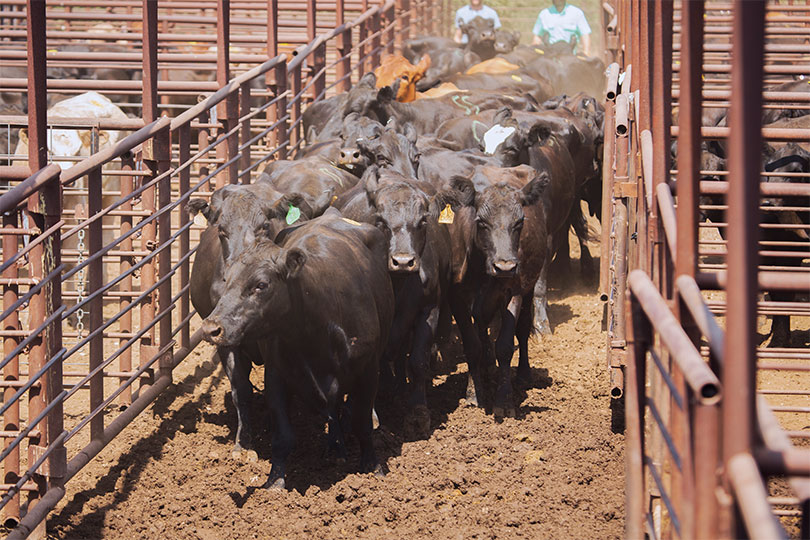By Julie Tomascik
Editor
High temperatures aren’t the only records set in Texas this year. The prolonged drought that came with it also sent cattle to livestock markets in numbers that haven’t been seen in a decade.
More than 2.66 million cattle have been sold this year, according to market data through August. That’s over 480,000 more cattle sold this year compared to last year.
The drought liquidation drew national attention when photos and videos of long lines at Texas livestock auctions were posted on social media.
“Auctions were seeing double, sometimes triple, the number of cattle arriving for the weekly sales starting in early July,” Tracy Tomascik, Texas Farm Bureau associate director of Commodity and Regulatory Activities, said.
The shrinking herds followed the decline in rains across the state.
But it’s not just the reduction in cattle numbers overall that is of concern. It’s what was, and in some cases still is, being sent to slaughter. Large numbers of breeding stock have been placed in feedlots, and cow slaughter numbers were up significantly.
“Beef cow slaughter was running over 80,000 a week in July,” Tomascik said. “That’s the biggest cow slaughter in a decade.”
That level of cow herd liquidation hasn’t been seen since the drought of 2011, and Texas A&M Livestock Marketing Specialist David Anderson said a 4% decline in the nation’s cow herd could be expected next year.
That decline in cow herd numbers will result in progressively tighter supplies of all fed cattle available for slaughter as we move into 2023, Tomascik noted.
But it was more than just the heat and water shortages that led to increased cattle sales.
Feed, fuel and fertilizer prices, worsened by inflation, played a major role in the decision to sell livestock.
“Some of this liquidation of cows has to do with calf prices that have not kept up with higher input costs,” Anderson said in an interview with the Texas Farm Bureau Radio Network. “But certainly, drought is a huge part of this.”
Persistent drought conditions led to lack of grazing and available hay, causing farmers and ranchers to make the decision to cull or liquidate herds.
“In this kind of severe scenario, selling some livestock is often the best management decision for the longevity of a farm and ranch,” Tomascik said. “It also allows the natural resources to rebound faster when drought conditions soften.”
A brief respite from the triple digit heat and months without rain came in August when rains began to fall across the state. The dust settled a bit and farm ponds caught some water.
It wasn’t a drought-breaking rain, but hope sprouted, growing more optimism among farmers and ranchers who have endured one of the hottest, driest summers on record.

